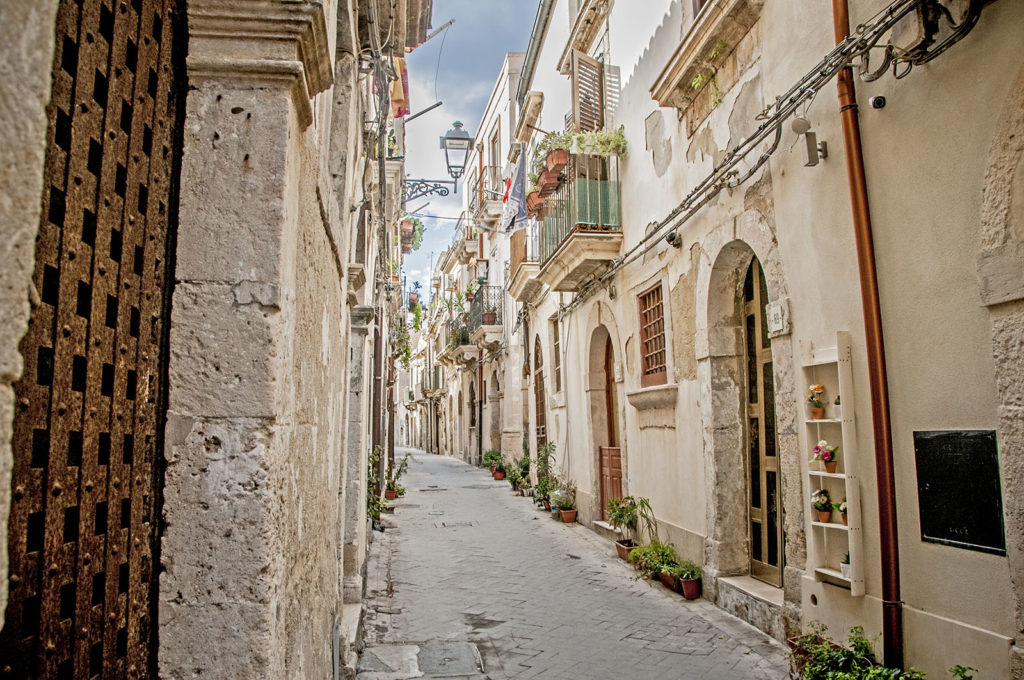Giudecca, in the area of Ortygia, is the district of Syracuse where the Jewish community once lived.
Today you can walk along the alleys of Giudecca and imagine past scenes of everyday Jewish life.
 In the Middle Ages the streets of the district had different names: the district “del pozzo che sbruffa” (lit: of the well that spurts) was a street with a well connected to the sea which water poured out from, while the district “di li muragli” (lit: of walls) was the area where vineyards and gardens flourished. Along the alleys of this area, steeped in historical testimonies, our gaze might fall upon an open-air church with traces of the ancient synagogue or more than ten metres underground to five basins of pure water dug into an underground cave: the Mikveh, the ancient
ritual bath
In the Middle Ages the streets of the district had different names: the district “del pozzo che sbruffa” (lit: of the well that spurts) was a street with a well connected to the sea which water poured out from, while the district “di li muragli” (lit: of walls) was the area where vineyards and gardens flourished. Along the alleys of this area, steeped in historical testimonies, our gaze might fall upon an open-air church with traces of the ancient synagogue or more than ten metres underground to five basins of pure water dug into an underground cave: the Mikveh, the ancient
ritual bath
.
The Jewish community lived in Syracuse, in Giudecca in particular, until 1492, when the sovereigns Isabella and Ferdinand II of Aragon ordered the expulsion of the Jews from all their properties, including in Sicily.
Since then, the ghettos, synagogues, cemeteries, sacred ornaments and books that once belonged to the Jewish community seem to have partly disappeared. Although it still retains its magical atmosphere, the district has given way to new buildings and other local businesses.
These include the shops and workshops linked to the Sicilian tradition of the
puppet opera
.
The puppeteers show off their wooden masterpieces, decorated with sparkling armour and brightly coloured plumes, in the alleys of the old Jewish quarter.